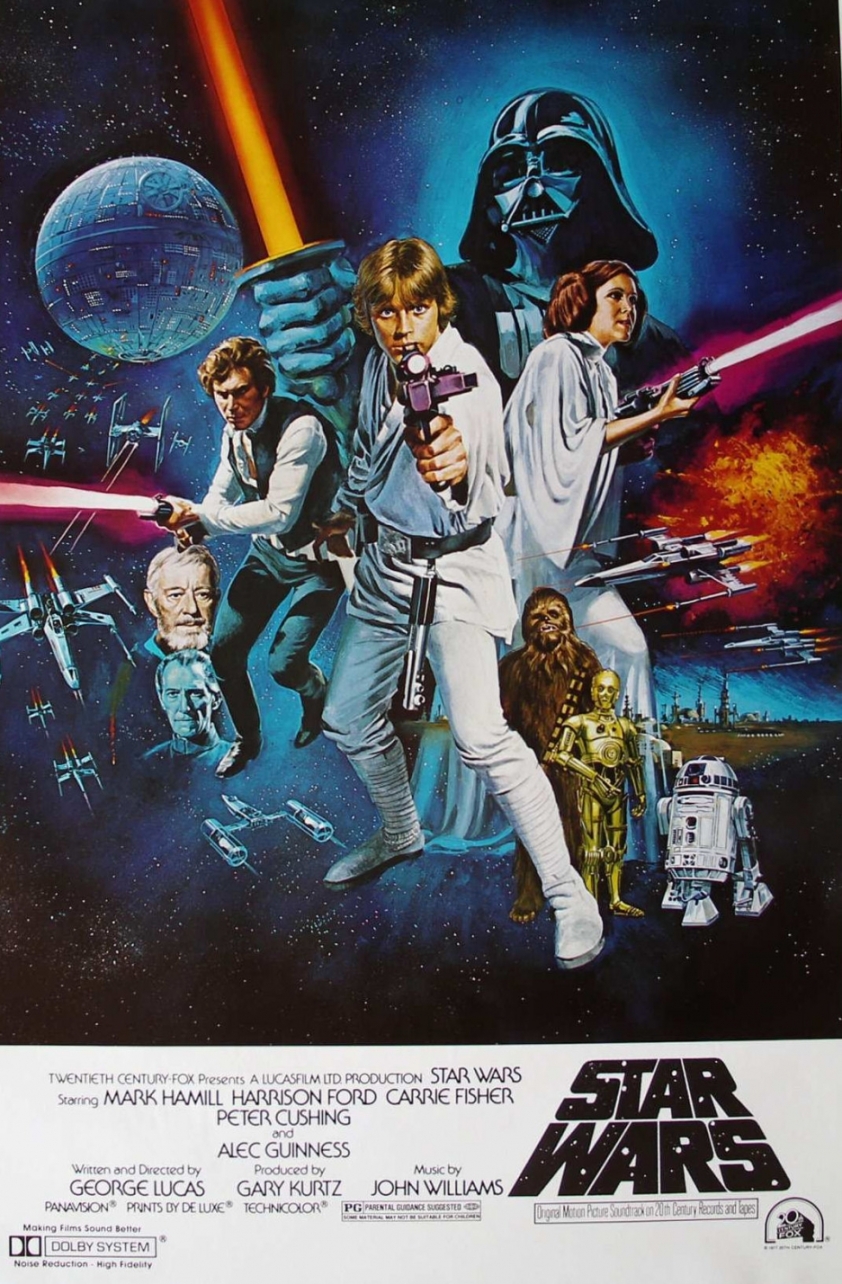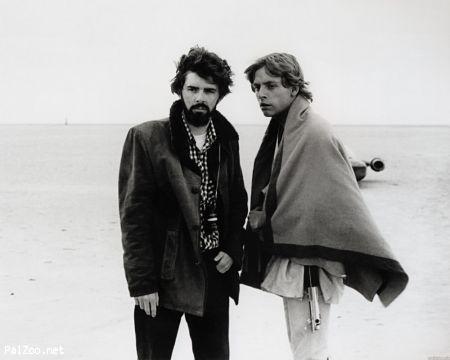
“Space scenes had always been done with a fixed camera, and for a very good reason. It was more economical not to create a background of stars large enough to pan through. STAR WARS did something that no other film had ever done. It panned the camera upward.”
Queue the first triumphant blast of John Williams’ score and, after an epic opening crawl mixing the spirit of the 1930s Flash Gordon serials and the overture of the great epics of the 1960s, this is exactly how unsuspecting audiences entered into the universe of Star Wars in 1977 – through something as simple to us today as a camera panning across the stars.
Perhaps that’s an odd way to start a film review. Then again, this isn’t exactly a film review, and the above passage really sums up why, for Star Wars wasn’t just a film – it was a revolution, both culturally and technologically. Visionary, bold and exciting, it revolutionised film-making, and drew sold-out audiences three years after its initial release.
How did this happen? More importantly, why? Star Wars (‘Episode IV: A New Hope’ was added to the title after the initial release) was by no means a perfect film: it was filled to the brim with corny dialogue, often-hammy acting and ridiculous names and characters.
In one sense, the opening of the review offers a plausible answer to that question: From the very first scene, Star Wars simply did things audiences had never before thought possible. But the technological prowess of the film didn’t in and of itself guarantee popular acclaim . Just look at the equally-impressive effects seen in 2001: A Space Odyssey; Kubrick’s sci-fi epic is rightly regarded as a seminal piece of filmmaking, but outside of critical circles, there is little warmth or fervour towards it – and certainly not to the extent there is for Star Wars.
So, whilst the breathtaking special effects certainly enabled Star Wars to explode into the public consciousness in as dramatic a fashion as it did, the real reason why it has becoming so ingrained in cinematic history is that all of this money and cutting-edge technology was serving the purpose of something far simpler, yet which escapes oh-so-many projects of this scale: the unfaltering and uncompromising passion of a true visionary in director George Lucas.

The George Lucas that time (and the Star Wars fandom) forgot – young, gifted, and undeniably driven
That’s right, I did just call George Lucas a visionary. In the light of the frankly disastrous prequel films (more on that later in the month) and cynical, CGI-slathered re-releases of the original trilogy, it is all to easy to paint George Lucas as a podgy, greedy charlatan who only used Star Wars as a way to line his pockets.
People forget that this is a man who had brilliant and original ideas, an unyielding passion for his work and a genuine understanding of cinema as a vehicle for storytelling; people forget that without George Lucas, there would be no Star Wars.
That iconic opening scene I opened the review with? The Directors Guild objected to it, as it eschewed the guidelines it held for opening credits. Undeterred, Lucas paid a fine and resigned. A largely unproven director, resigning from The Directors Guild over the opening titles? That is the mark of a man with a vision.
That’s just the tip of the iceberg, though. This is a man who’d stay up late at night coming up with absurd names, characters and places, then throwing them altogether to see what stuck – after all, Journal of the Whills was probably not going to set the world alight. A tale of a ‘Jedi-Bendu’ space commando may not be the space opera that you’re looking for, but it does demonstrate the sheer quantity of ideas that must have been spinning around in Lucas’ creatively-fertile mind over the course of the creative process.
Oh, and this is discounting a little side-project Lucas had at the time called The Adventures of Indiana Smith – no prizes for guessing what that evolved into.
So whilst Star Wars did do many things never done before – new shots, new effects, and new ways of utilising models – this ultimately was all to bring to life Lucas’ vision, with the technological marvel 20th Century Fox wanted fusing with the new mythos Lucas had spent so many long hours pouring his heart and soul into.
The result was an experience that was incredibly intense and yet almost spiritual. Audiences were transported to a bold, wonderful new galaxy cinematic technology had simply not been able to bring to life beforehand.
The moment when this marriage of lush production values and creative vision truly come together isn’t the aforementioned opening scene, however. Rather, it is something more intimate – yet no less breathtaking.

Of course, I’m referring to the famous binary sunset scene, where Luke Skywalker, frustrated at being held back another year from his dream of jetting off of the desolate wasteland he calls home, storms outside and watches the setting of a twin set of suns. That wistful look Luke gives as the strings soar, that sense of unfulfilled potential, of an adventure waiting to be had, of whole new worlds just waiting to be explored…
That is Star Wars.
That sense of endless possibility, of yearning for more and even daring to hope for more epitomises everything Star Wars is. Indeed, whilst A New Hope is a film and story in its own right – and a fantastic one at that – the image of Luke and the twin suns reveals what A New Hope really represents: a beginning – of a young farmboy’s journey, of a story spanning two trilogies, of an entertainment phenomenon that has endured over the decades.
More than any of these things, however, A New Hope is the beginning of a journey for millions of people into a rich, vibrant universe where anything is possible.
Every clash of lightsabers; every misfiring Stormtrooper; every cheesy one liner; every Wookie’s roar and every astromech droid’s bleet. The real worth of these things is not reflected in the disparaging criticism or gushing praise of any aloof critic, but is evident in every child pretending to be a Jedi; in every smiling fan at a convention; in every grown man in the Western World pretending not to shed a tear over the latest Force Awakens trailer; in every group of friends and every family brought together.
For that is the lasting achievement of George Lucas – a universe and a mythos brought to life though the very finest techniques cinema had to offer has ironically transcended its celluloid origins and become not just a cinematic spectacle, but a cultural experience in its own right. Adventure on this a grand scale, with such endless and wondrous possibilities, is something which cinema has not been able to recreate since – and probably never will.
Verdict: 10/10